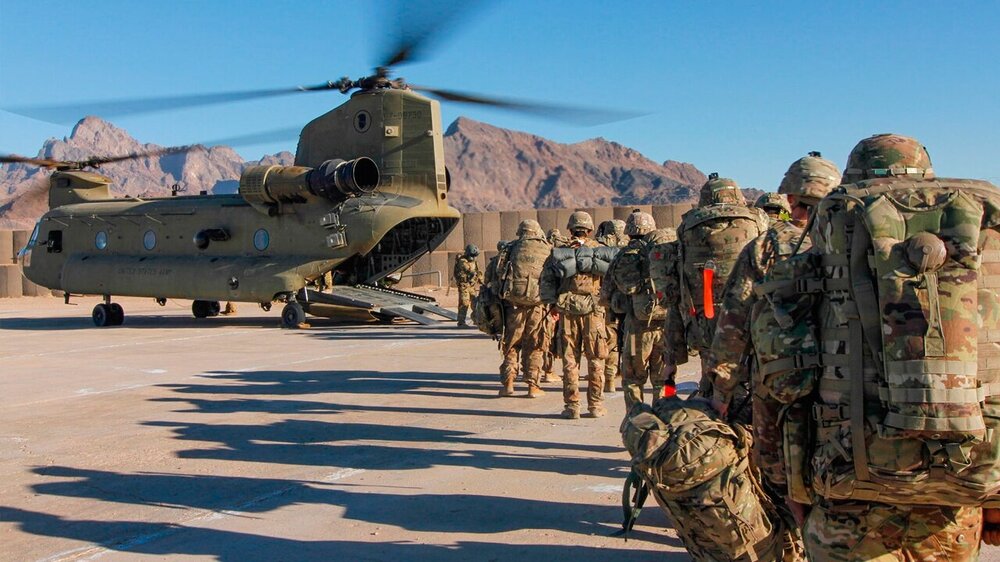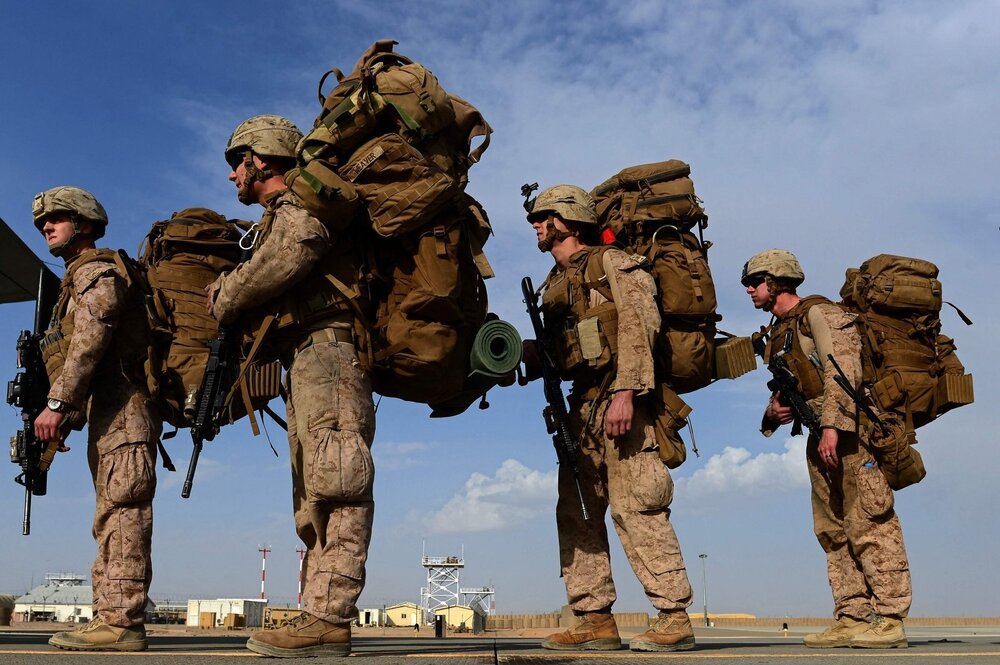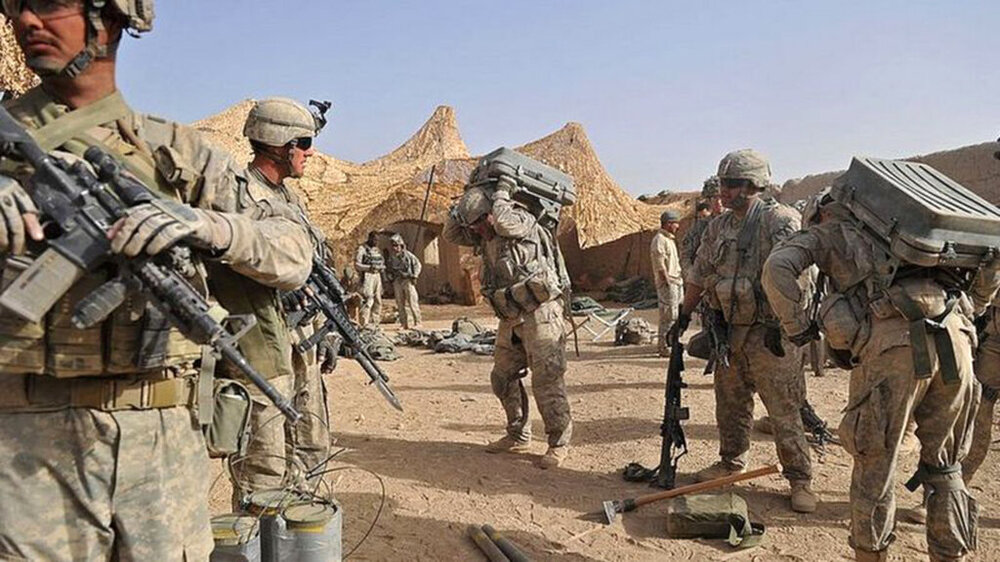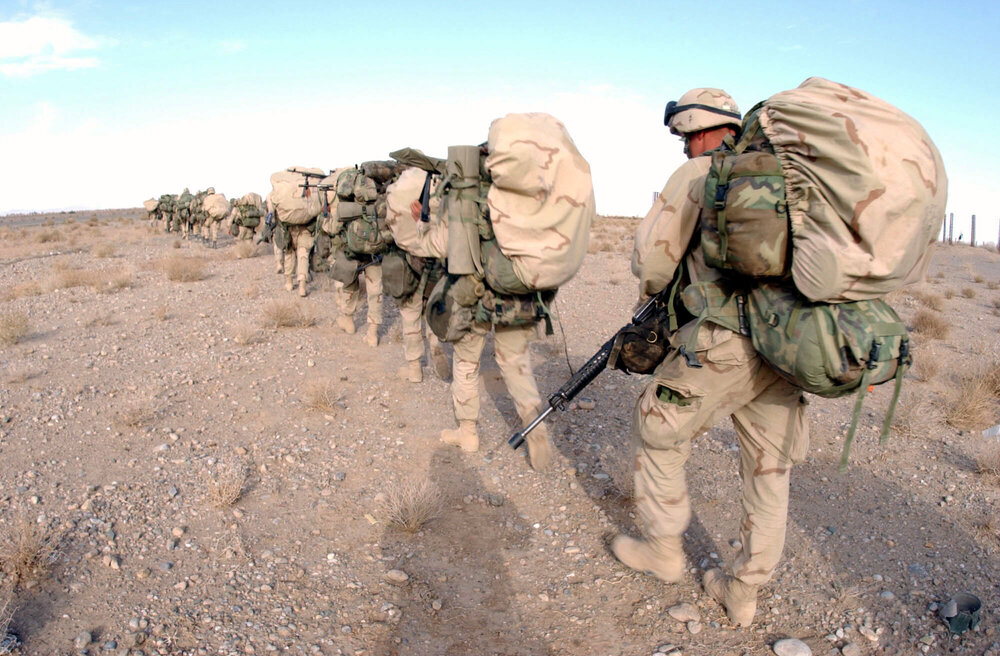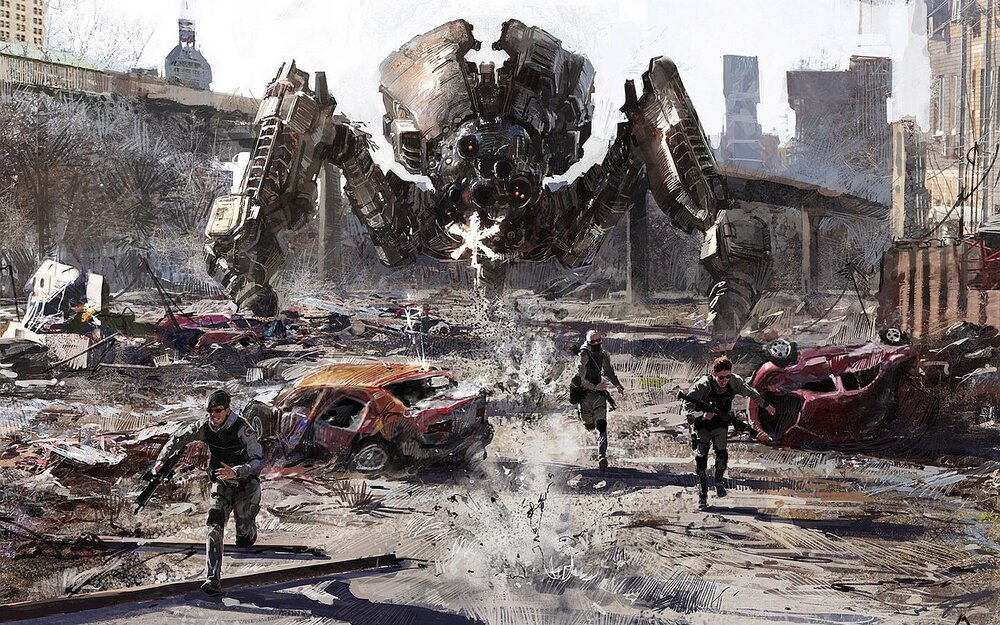-
Posts
705 -
Joined
-
Last visited
-
Days Won
15
Content Type
Profiles
Forums
Events
Downloads
Everything posted by Komandos
-
That is why soldiers drop backpacks with large reserves before the battle. And the command never sends 8 soldiers into battle with a limited supply of equipment, having the resources and the ability to send 16-24 or more. I know that the developers are trying to come up with difficulties for the player that the player will have to overcome. But it is not necessary to add these difficulties to every mission, and especially in those missions where the player has every right to prepare well for the task and take everything he needs with him.
-
This is a real tactical device. If any tactical technique that gives a tactical advantage is prohibited from being used, then what is the meaning of tactics and the "tactical constructor" that is the game?
-
You mix the concepts of "limit" and "give to the player" into one pile. If the player cannot throw an additional box of grenades into the helicopter (Following the example of how a soldier can do this in reality, wanting to take more grenades with him), then this refers specifically to restrictions, and not to obtaining unnatural opportunities. It looks something like this: if I made a remark for you, "the fact that a unit does not have the ability to move at all looks unnatural," and you would answer me, "if a unit is given an unlimited limit of movement, then it looks more unnatural." It's not that aircraft should have the same unlimited warehouse as a military base. The point is that aircraft should also have inventory.
-
What's wrong if a soldier takes into battle not two grenades, but four, and leaves a backpack with additional grenades on the floor of the transport? How can this spoil the balance of power in a game where aliens are able to win only with the help of numbers and endless reinforcements?
-
What balance in the game can this upset? The balance in which the player must kill one alien with one grenade, and the second with one burst from a machine gun (and nothing else)? If the player takes more equipment with him, he will have the opportunity to kill two aliens with either two grenades; or two bursts from a machine gun; or one grenade and one burst from a machine gun. How can this upset the balance of the game? I understand that the developers want to create difficulties on the battlefield that the player's soldiers will overcome. But it seems to me that it is better to create difficulties by increasing the capabilities of the enemy, rather than limiting the capabilities of the player's soldiers.
-
Naturally. No one during the battle sits in the trenches with these huge backpacks on their backs, but leaves them in an armored vehicle or on the ground.
-
I also like it if there are tasks with a shortage of ammunition in the game. But when you have boundlessly huge ammunition depots on your Base, and the player does not have the right to take everything he considers necessary for any task - such restrictions seem artificial. If the developers want to add difficulties to me in the game, then it's better to place more enemies in the location than to deprive me of tools and the opportunity to use the tactics that I like best.
-
Huge alien platforms (5x5) that destroy the city is an idea.
-
Chris Posted July 11 If you have questions about any of the items on the roadmap, please post them up for discussion as a new thread on the general forums. If a huge 3x3 (or 5x5) mechanical platform attacks the city during the terror and destroys all the buildings in its path, then it will look impressive (as in the movies). This platform cannot be destroyed by conventional weapons. The player will need a combat platform with powerful weapons or participation in a terrorist mission of a fighter aircraft, which with a certain probability (accuracy) will be able to shoot this target from the air.
-
As an option: we are creating a "virtual" aircraft in the game, which the player will fill with soldiers. If you need to replace a platoon in a real aircraft, the player will only need to click the "swap teams" button.
-

Ideas for Medal and Rank bonuses
Komandos replied to Ogilvy the Astronomer's topic in Xenonauts-2 General Discussion
Similar ideas have been expressed for a long time and by many players. Which only confirms the need for such a function. https://www.goldhawkinteractive.com/forums/index.php?/topic/21496-teamsplatoon-creation/ -
If the player in the game will have 3x3 battle platforms, then the aliens should also have similar ones.
-
Absolutely all the restrictions that exist in any games are explained by the need for balance. But players do not buy the game in order to feel (experience) the game balance (or what is meant by balance). When the game goes on sale, many players will use cheats and mods (which will upset the balance of the game, but players still like it). Everyone likes to be rich. Everyone likes to accumulate wealth. Inventory on aircraft helps to realize this desire.
-
Will the player overload his soldiers and dump all the equipment on the floor in the first round, if this equipment can be loaded into the aircraft inventory?
-
It seems to me that not all missions should be similar to each other. And the difficulties that the player faces - on different tasks (missions) should be different. I am a supporter of this point of view - the wider and more diverse the gaming experience that a player gets in the game, the better. What I don't like the most is that there is not a single mission in the game (including the final mission) where the scale of the battle would be at the UFO level:1-2-3. (There are no two-series missions and there is not even one battle at the platoon level.)
-
The game also assumes that the player will somehow win (fulfill) all tasks. In fact, the dispute is about what difficulties the player should face. Should the player face a shortage of ammunition on the battlefield? I think I should, but it should be in defensive missions and assignments, not attacking missions and assignments. It is logical that no one wants to send a squad on a mission, not being sure that the squad will have enough ammunition. I suggest adding tasks to the game, endurance missions, where the player will have to face a shortage of ammunition. In UFO2, such tasks consisted of two parts (On the surface and underground (in the holds))
-

Base defense missions and how to make them better
Komandos replied to Skitso's topic in Xenonauts-2 General Discussion
For the development of the strategic level of the game, it would not be bad to have several detachments of soldiers for various tactical tasks. (At the moment, the game has one universal squad for all cases). These several detachments should not only be hired and armed, but also trained. The player must invest part of the forces, funds, resources in the preparation and training of these units. Before the squad begins to perform its tactical tasks, the player must make a number of important choices that will determine the capabilities of these units. And the outcome of the battle will depend on the correctness of these elections. I agree that it should be possible to create a permanent garrison at each base. The problem is that with the help of recruits, a player in X2 can cope with any opponent. Training of soldiers and detachments before the battle is not mandatory. At the moment, in the game, we have one universal squad that is able to perform absolutely all tasks and control all locations of the globe. This ability: to keep up everywhere, and cope with any difficulties - must be taken away. I will be happy if the player needs 3 squads in the game to get to all the locations and complete all the tasks. Three squads is not so much. -
It seems to me that ultimate armor makes the ending of the ultimate game monotonous. I would suggest several types of ultimate armor for the game. The first type of ultimate armor is available to the player from the very beginning. This is the complete absence of any armor - only one disguise. This gives a bonus of agility, speed, evasion, reaction, stealth, etc., which is very good for soldiers whose task is to get close to the enemy unnoticed and make a single accurate shot. The characteristics of a soldier and the abilities of a soldier in this type of armor are the highest. But it absolutely does not protect. The second type of absolute armor - the player receives in the middle of the game. This is the most optimal option in terms of price/ quality ratio. If a soldier dies in this armor, or this armor is destroyed by a shot, then the player loses very little. The third (final) type of absolute armor - has maximum protection. But it is not very profitable for the player when a soldier in this armor dies. Armor costs more than the maintenance and training of a soldier for the entire game. It is rational to use this type of armor only for the final battle.
-
The difficulty of missions is the easiest to adjust: by changing the number of aliens in the task or the number of soldiers in the player's transport. Why is it such an easy way to choose the difficulty of the game according to your abilities - not to give the player from the very beginning?
-
The problem with strategy in this game is that the player cannot predict the actions of aliens and use this knowledge to their advantage. There is only one way to predict the actions of aliens - to play this game at least once. The aliens must follow some random strategy (plot) of behavior chosen by them from the many strategies (plots) of behavior available to them. The player's task is to guess this behavior strategy and build their game on the correct prediction of the aliens' next move. It would not be bad if there were riddles in the game, having solved which, the player can predict the next step of the aliens. I could think about it if someone is interested in the development of this topic.
-

Base defense missions and how to make them better
Komandos replied to Skitso's topic in Xenonauts-2 General Discussion
If the player has the right of the first move when attacking, then it is logical that the aliens should have the right of the first move when attacking. The saddest thing is that the aliens, when attacking the player's Base, have neither tactics nor strategies capable of damaging the player. The player does not even have a task: to minimize the damage that the aliens will cause. There are no serious tasks for the parties to the conflict in the mission to protect the base. The aliens don't even have a task they can solve. I think the game should alternate missions, with two types of tasks: 1. the player must strive to achieve maximum winnings. 2 - the player should strive to minimize his losses. And the initial conditions should vary in such a way that it is impossible to predict in advance: what is the maximum gain and what is the minimum loss. That is, in one case: the minimum loss in the battle to protect the Base will be the injury of several soldiers, in the other case - the minimum loss will be the destruction of buildings of half of the Base. -
It is enough to add to the game one huge building "airfield complex" in size 6x4 (5x4 or 4x4), which immediately includes the foundation for all subsequent buildings, improvements of these buildings and makes it impossible to build other buildings (not related to the airfield) - then you can limit yourself to the functionality of existing bases. The game also has cities. The player can use them as locations for their airfields. These airfields can be made mobile.
-

Suggestion: Make soldiers list filterable
Komandos replied to doubleskulls's topic in Xenonauts-2 General Discussion
I agree. I propose to make two modes of assigning soldiers to transport: 1: By profession. 2: The old way. (There should be two destination modes) 1 - A soldier with a certain specialty (for example, a machine gunner) can only be assigned to a seat on an airplane reserved for the role of a "machine gunner". If such a place is occupied, then the list of vacancies "by profession a machine gunner" for such a soldier will be empty. 2 - The old way.


